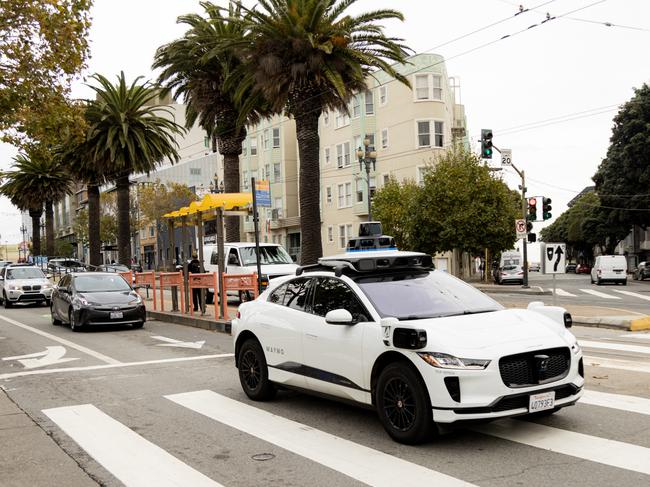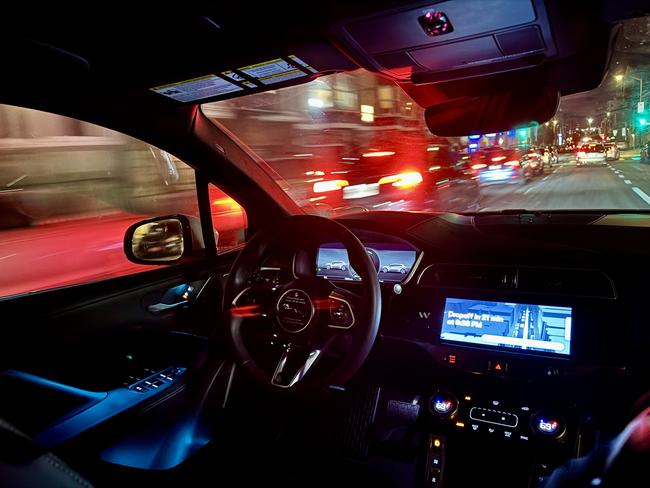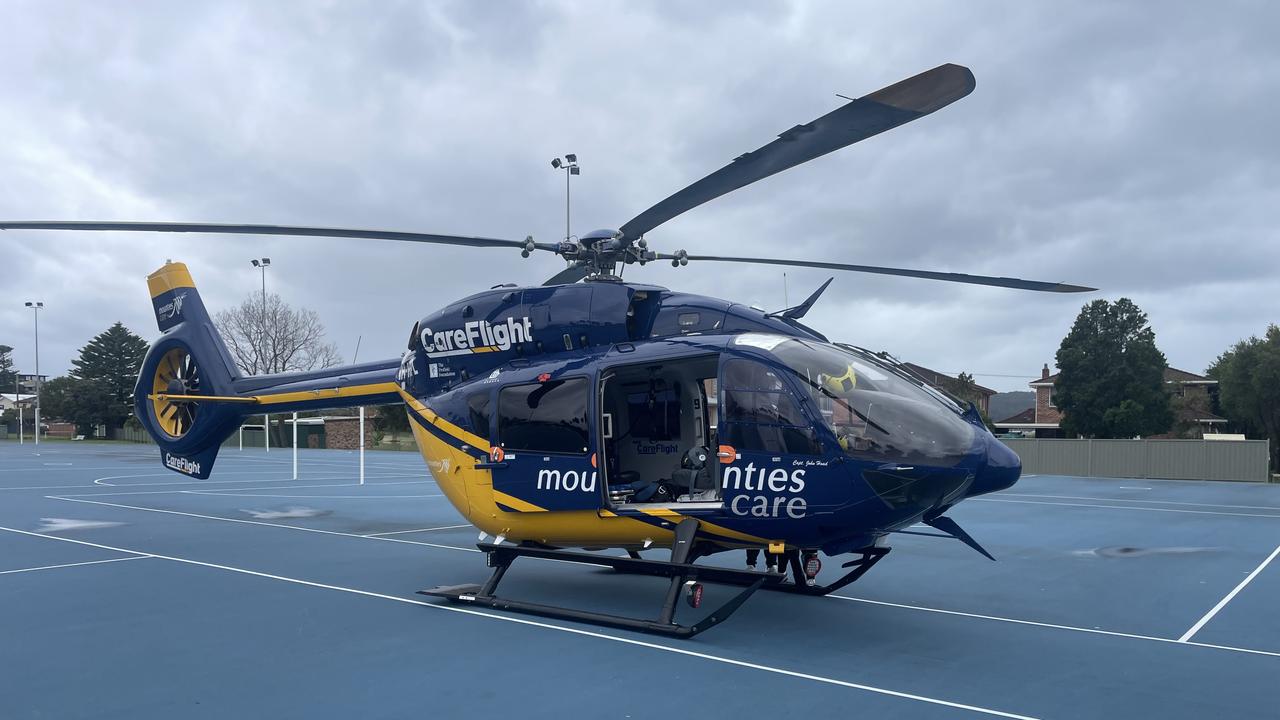What it’s like to be in a driverless car as use of automated vehicles rise throughout the world
The global rise of automated cars has been rapid, and they’re on the way to Australia, and despite one hair-raising moment, this experience shows us why they are the way of the future. See video.

Technology
Don't miss out on the headlines from Technology. Followed categories will be added to My News.
Australian drivers could be sharing the roads with driverless cars by the end of the decade with automated driving trials already underway across the country.
In the United States and China, thousands of robotaxis are already servicing major cities.
But despite the rapid expansion, global research shows consumer hesitancy toward the technology is growing.
A recent survey showed around 66 per cent of people said they were “afraid” of automated vehicles, up from 54 per cent in 2021.

Studies have shown that seeing and riding in autonomous vehicles (AVs) can reduce that fear, as has been the case in the US where more than 250,000 trips are taken in the Waymo robotaxi fleet each week in Texas, California and Arizona.
The technology has been so popular that the fleet of driverless Jaguar sedans are also being rolled out in Atlanta, Miami, Washington DC and overseas to Japan.
Waymo claims its driverless fleet is safer than manned vehicles, publishing data that showed its cars had 81 per cent fewer injury crashes than human drivers and 83 per cent less airbag deployment crashes.
However the technology is not infallible.
Recently 1200 vehicles in the Waymo fleet were recalled due to a series of low speed collisions with gates and chains.
Research by Australia’s National Transport Commission found that perceptions of safety were closely linked to the implementation of strong laws and regulations around the technology.
And work is already well underway to develop a national AV law that has enough flexibility to keep up with the changing technology.
“The National Transport Commission in partnership with the Australian Government is working on the raft of things that need to change for AVs to run safely on our roads – from who’s in control of a vehicle when there’s no human driver to how insurance will work and rules around maintenance,” a NTC spokesman said.


They said the biggest challenge Australia had in attracting the technology was in creating a national market with economies of scale attractive enough for manufacturers.
“It underpins the work underway to develop a national Automated Vehicle Safety Law and the National Transport Commission’s work to even out the difference in hundreds of state and territory road rules, laws and regulations,” the spokesman said.
“Without this national approach, Australia will lag behind.
“We got a clear message from industry that regulations that set the ground rules for AVs will underpin any decision they make to bring AVs to Australia.”
It’s forecast that by 2030, up to 10 per cent of new vehicles will be equipped with automated features.

MY EXPERIENCE INSIDE A DRIVERLESS CAR
I’m five minutes into my first experience in a driverless car when I spot the elderly woman making a beeline toward the tree-lined street, her arms laden with grocery bags.
As we hurtle closer at what feels like 100km/h but is probably only 30km/h, the car still hasn’t anticipated the potential collision and I instinctively begin tapping my foot on the floor of the back passenger seat looking for the brake pedal.
But I needn’t have worried.
As the woman gets closer, the car slowly rolls to a smooth stop and the unwitting pedestrian crosses safely to the other side before we’re off again.
An army of Waymo’s fully autonomous taxis are sprouting up across the United States, including in California, Austin and Phoenix with plans to expand to Atlanta, Miami and Washington DC soon.

In Los Angeles, the white Jaguar sedans covered in cameras are everywhere and during a recent trip, I’m curious to find out what all the fuss is about.
The process to book a car is as simple as calling an Uber. I download the Waymo app, give it my pick-up and drop off locations and a car is quickly on the way.
As I wait, the photographer I’d been on assignment that day with begins regaling me with Waymo horror stories – “did you hear about the guy who got locked in one that drove around in circles for so long that he missed his flight,” he tells me.
With that story fresh in my mind, my car pulls to the kerb in Santa Monica and the journey begins.
To get inside the car, you need to unlock the doors through the Waymo app – a safety mechanism to make sure just anyone doesn’t jump inside as the car travels across the city.
Once inside you’re given a welcome safety message before the car hits the road to you destination.
The first couple of minutes are a little unnerving watching the steering wheel move on its own as if I’ve landed in a Harry Potter book but I soon get used to the unusual sight.
Twice the car stops for pedestrians who cross in front of us in suburban streets.
There’s one hair raising moment when the brakes slam on for seemingly no reason – the best I can tell is that it detected movement from the car in the next lane and adjusted in anticipation of it merging.
During the ride, you can adjust the music and temperature to your preferences.
And the best part of all – absolutely no small talk.
More Coverage
Originally published as What it’s like to be in a driverless car as use of automated vehicles rise throughout the world




